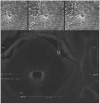Magnetic resonance-guided focused ultrasound surgery: Part 2: A review of current and future applications
- PMID: 22791029
- PMCID: PMC4104674
- DOI: 10.1227/NEU.0b013e3182672ac9
Magnetic resonance-guided focused ultrasound surgery: Part 2: A review of current and future applications
Abstract
Magnetic resonance-guided focused ultrasound surgery (MRgFUS) is a novel combination of technologies that is actively being realized as a noninvasive therapeutic tool for a myriad of conditions. These applications are reviewed with a focus on neurological use. A combined search of PubMed and MEDLINE was performed to identify the key events and current status of MRgFUS, with a focus on neurological applications. MRgFUS signifies a potentially ideal device for the treatment of neurological diseases. As it is nearly real time, it allows monitored provision of treatment location and energy deposition; is noninvasive, thereby limiting or eliminating disruption of normal tissue; provides focal delivery of therapeutic agents; enhances radiation delivery; and permits modulation of neural function. Multiple clinical applications are currently in clinical use and many more are under active preclinical investigation. The therapeutic potential of MRgFUS is expanding rapidly. Although clinically in its infancy, preclinical and early-phase I clinical trials in neurosurgery suggest a promising future for MRgFUS. Further investigation is necessary to define its true potential and impact.
Conflict of interest statement
Dr. Neal Kassell is a shareholder in InSightec Inc and is the founder of the Focused Ultrasound Surgery Foundation. Drs. Snell and Eames are employed by the Focused Ultrasound Surgery Foundation. The other authors have no personal financial or institutional interest in any of the drugs, materials, or devices described in this article.
Figures




Comment in
-
Comment.Neurosurgery. 2012 Oct;71(4):763. Neurosurgery. 2012. PMID: 23162816 No abstract available.
Similar articles
-
High-intensity focused ultrasound surgery of the brain: part 1--A historical perspective with modern applications.Neurosurgery. 2009 Feb;64(2):201-10; discussion 210-1. doi: 10.1227/01.NEU.0000336766.18197.8E. Neurosurgery. 2009. PMID: 19190451 Free PMC article. Review.
-
Magnetic Resonance-Guided High Intensity Focused Ultrasound for Treating Movement Disorders.Prog Neurol Surg. 2018;33:120-134. doi: 10.1159/000481080. Epub 2018 Jan 12. Prog Neurol Surg. 2018. PMID: 29332078 Review.
-
MR-guided focused ultrasound surgery, present and future.Med Phys. 2013 Aug;40(8):080901. doi: 10.1118/1.4811136. Med Phys. 2013. PMID: 23927296 Free PMC article. Review.
-
Magnetic resonance guided focused ultrasound surgery. Ablation of soft tissue at bone-muscle interface in a porcine model.Eur J Clin Invest. 2008 Apr;38(4):268-75. doi: 10.1111/j.1365-2362.2008.01931.x. Eur J Clin Invest. 2008. PMID: 18339007
-
Magnetic resonance guided focused high frequency ultrasound ablation for focal therapy in prostate cancer - phase 1 trial.Eur Radiol. 2018 Oct;28(10):4281-4287. doi: 10.1007/s00330-018-5409-z. Epub 2018 Apr 25. Eur Radiol. 2018. PMID: 29696431
Cited by
-
Predicting ablation zones with multislice volumetric 2-D magnetic resonance thermal imaging.Int J Hyperthermia. 2021;38(1):907-915. doi: 10.1080/02656736.2021.1936215. Int J Hyperthermia. 2021. PMID: 34148489 Free PMC article.
-
Model predictive filtering MR thermometry: Effects of model inaccuracies, k-space reduction factor, and temperature increase rate.Magn Reson Med. 2016 Jan;75(1):207-16. doi: 10.1002/mrm.25622. Epub 2015 Feb 25. Magn Reson Med. 2016. PMID: 25726934 Free PMC article.
-
Evaluation of Thiel cadaveric model for MRI-guided stereotactic procedures in neurosurgery.Surg Neurol Int. 2014 Sep 5;5(Suppl 8):S404-9. doi: 10.4103/2152-7806.140199. eCollection 2014. Surg Neurol Int. 2014. PMID: 25289170 Free PMC article.
-
Simultaneous proton resonance frequency shift thermometry and T1 measurements using a single reference variable flip angle T1 method.Magn Reson Med. 2019 May;81(5):3138-3152. doi: 10.1002/mrm.27643. Epub 2019 Jan 16. Magn Reson Med. 2019. PMID: 30652347 Free PMC article.
-
Magnetic resonance-guided focused ultrasound: a new technology for clinical neurosciences.Neurol Clin. 2014 Feb;32(1):253-69. doi: 10.1016/j.ncl.2013.07.008. Epub 2013 Nov 8. Neurol Clin. 2014. PMID: 24287394 Free PMC article. Review.
References
-
- Christensen CM. The innovator’s dilemma: when new technologies cause great firms to fail. Boston: Harvard Business School Press; 1997.
-
- Jolesz FA, Jakab PD. Acoustic pressure wave generation within an MR imaging system: potential medical applications. J Magn Reson Imaging. 1991 Sep-Oct;1(5):609–613. - PubMed
-
- Cline HE, Schenck JF, Hynynen K, Watkins RD, Souza SP, Jolesz FA. MR-guided focused ultrasound surgery. Journal of computer assisted tomography. 1992 Nov-Dec;16(6):956–965. - PubMed
-
- Martin E, Jeanmonod D, Morel A, Zadicario E, Werner B. High-intensity focused ultrasound for noninvasive functional neurosurgery. Annals of neurology. 2009 Dec;66(6):858–861. - PubMed
Publication types
MeSH terms
Grants and funding
LinkOut - more resources
Full Text Sources
Other Literature Sources
Medical
Research Materials

